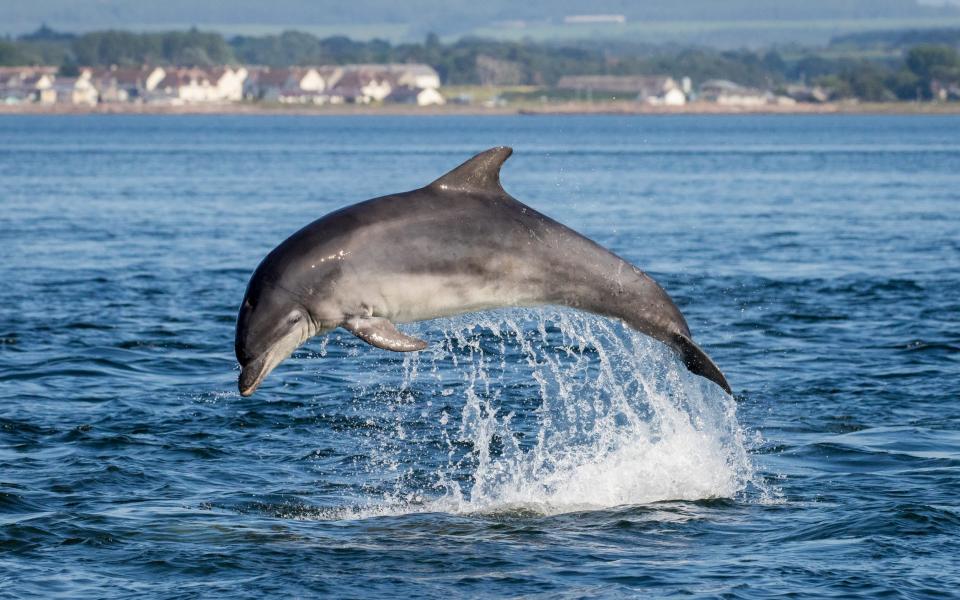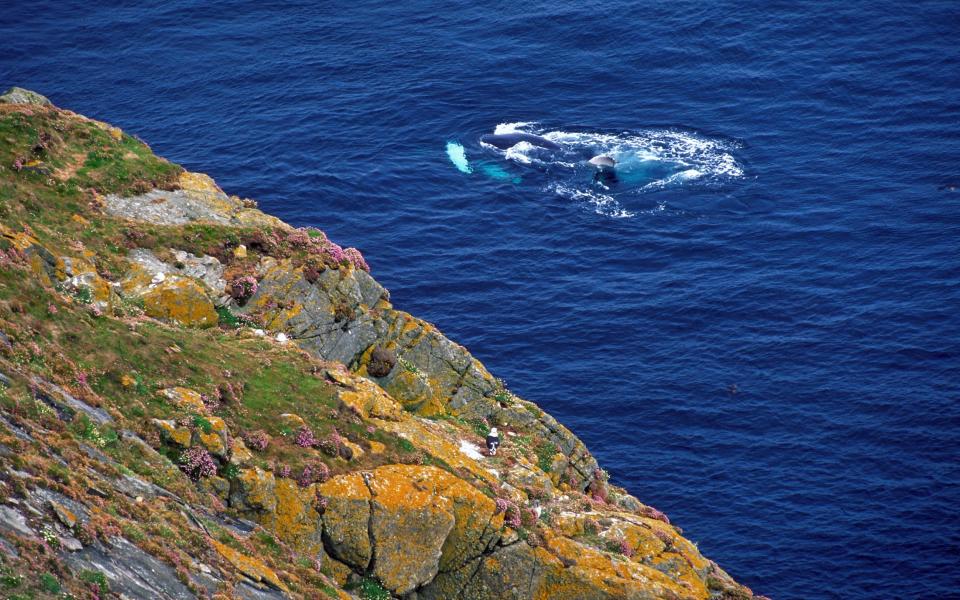How climate change is bringing more whales to British waters

Centuries of hunting, habitat loss and persecution have left the UK and Ireland among the world’s most nature-depleted nations. But although we’ve lost our bears and wolves, great auks and Irish elks, the British Isles remain remarkably rich in whales and dolphins. Indeed, around a quarter of all known marine cetacean species occur in our waters. So when news broke from Cornwall recently of a humpback whale trapped in fishing gear, it highlighted that these massive beasts are closer to home than we might think.
The idea of ocean giants around our shores may be surprising, but the Cornish humpback was by no means an isolated sighting. “They’re spotted in Britain in increasing numbers,” says Hannah Wilson of Marine Discovery, a boat trip operator that assisted in freeing the Easter individual. “We’re getting a lot more dolphins too as climate change impacts food distribution, bringing the animals closer inshore. Humpbacks have rebounded since the end of commercial whaling, so it’s likely that we’ll see more of them as they repopulate their range.”

It’s not just in the southwest that cetacean encounters are booming. “I grew up birding on the North Yorkshire coast in the 1980s and I never remember anyone seeing a whale back then,” says Richard Baines of Yorkshire Coast Nature (yorkshirecoastnature.co.uk). “Now we see minke whales on most of our seabirds and whale adventure trips.”
With another operator, Farne Islands Tours (farneislandstours.co.uk) also plying the east coast, North Sea sightings are becoming ever more reliable. Other epicentres of whale and dolphin activity around the British Isles include Jersey’s Les Écréhous reef, Ireland’s west coast and Wales’s Celtic Deep. But the most prolific cetacean spotting lies in Scotland, particularly to the north and west.
Here, the Shetlands perform well for orcas, with a semi-resident population swelled by Icelandic transients that migrate to hunt seals. Sperm, fin, pilot and minke whales are also frequent visitors, and even an Arctic beluga whale was spotted here in January.

Pickings are even richer in the scattered Western Isles. Their secret is The Minch: a channel between the mainland and Outer Hebrides that attracts sei, fin, humpback and pilot whales with reasonable frequency, plus much more commonly sighted porpoises, bottlenose dolphins and minke whales. Even blue whales – the largest animal ever to have lived – are not unknown here. Conditions are so ideal that it’s also possible to whale-watch from land, a prospect aided by the Hebridean Whale Trail’s 30-strong network of cetacean locations.
Calm, flat-sea conditions from May through September offer optimal whale-spotting, when plankton blooms attract shoals of fish upon which whales feed. So could the British Isles one day compete with Cape Cod, the Azores and other whale hotspots? “Geography is against us,” says Hannah Wilson. “We lack the deep-water canyons and nutrient upwellings that encourage great whales to linger, plus we’re not on any major migration routes. So although dolphins are increasingly commonplace here in Cornwall, brushes with really big whales will likely remain rare – but incredible – thrills.”
Five UK dolphin and whale experiences
Land’s End leviathans
Cornwall’s wild west (where the humpback whale was rescued over Easter) is a certified sealife hotspot. Expect to spy dolphins, seals and basking sharks on a four-hour Marine Discovery voyage departing from Penzance (from £57pp, marinediscovery.co.uk). Sailing on a catamaran ensures stability and comfort for a trip combining coastal habitats with the cetaceans’ deep-water fishing grounds (actual itineraries depend on sea conditions and recent sightings). Stay nearby in rolling countryside at Rosehendra, a stone barn conversion located between Penzance and Marazion. A week’s self-catering in May costs from £892 (sleeps four; luxurycoastal.co.uk).
Western Isles
Boat trips are no fun if you suffer from seasickness but in Scotland, land-based whale-watching rivals that at sea. Harris, Lewis and Skye are home to several Hebridean Whale Trail sites (whaletrail.org). Visit Kilt Rock, Tiumpan Head, the Butt of Lewis and others on a Highlands & Islands self-drive tour with kayaking, hiking and paddleboarding to round out the experience. The 13-night trip starts and ends in Fort William and costs from £1,645pp, including B&B accommodation, ferry crossings, various activities and detailed directions for the self-guided elements. Travel to/from Fort William not included (adventuretoursuk.com).
All at sea
By maximising time spent in the animals’ environment, small-ship cruises abound in whale-spotting potential. Hurtigruten’s nine-night Edinburgh to Iceland voyage sails via the Shetlands (an archipelago renowned for orca sightings) as well as Fair Isle and the Orkneys (departs June 29, 2024, from £3,390pp with £300 on-board credit, mundyadventures.co.uk). Or go flight-free on an eight-night Scotland’s Scenic Isles itinerary sailing round-trip from Newcastle on May 28 with Fred Olsen, taking in the Orkneys, Small Isles and The Minch alongside an expert from wildlife charity ORCA to locate and identify species (from £1,199pp, fredolsencruises.com).
Wildlife immersion
Whale-watching is just one highlight on this week-long Isle of Mull Wildlife Extravaganza escorted tour. As well as heading into The Minch to seek harbour porpoises, minke whales and various species of dolphin, the tour (led by presenters Mike Dilger and Nick Baker) focuses on puffins, hen harriers, short-eared owls and both golden and white-tailed eagles (for which Mull has perhaps the greatest density in Western Europe). Accommodation throughout is at Knock House in the 32,000-acre Benmore Estate. From £2,295pp, including half-board accommodation, guided excursions and return ferry from Oban (departs June 9, 2024; wildlifeworldwide.com).
Into the deep
Although deliberately swimming with cetaceans in the UK is not allowed, these curious mammals don’t play by our rules. On Celtic Deep’s tours to swim with blue sharks off Pembrokeshire, dolphins frequently approach for encounters on their own terms. The boat itself is a platform from which to spy pilot, fin and minke whales, plus other ocean giants such as basking sharks and bluefin tuna. Available from July to October, the full-day tours cost £195pp (celticdeep.org). Stay at Milford Waterfront’s Tŷ Hotel, whose on-the-water “floatel” cabins complement the maritime experience (two-night July stays from £392, ty-hotels.com).


